For decades, a steady stream of Armenian immigrants have arrived in Southern California communities, such as Glendale, to start new lives. There are actually more Armenians living outside the country, in places like Los Angeles, than there are inside Armenia. That’s because hundreds of thousands of Armenians fled during the genocide in 1915 and 1916 and wound up all over the world. Another large wave of Armenians left in the period around the collapse of the Soviet Union in 1991 when Armenia became an independent country.
But recently, many of the children of these immigrants have started migrating in the other direction: leaving LA behind and moving to their families’ ancestral homeland of Armenia.
Those who decide to uproot and move roughly 9,000 miles away to Armenia’s capital, Yerevan, make the leap for very different personal reasons. But most say they are seeking stronger ties to their homeland.
“Before I came here, Armenia was this imagined place that existed in my mind and in my heart and in songs and food, but I had no direct connection to Armenia,” says Kyle Khandikian, an LA native who moved to Yerevan seven years ago. “Now, it’s just become part of my everyday.”
Sometimes referred to as “repats,” these transplanted Angelenos have a big impact on Armenia. Many open new businesses and work in development projects in this young country, which suffers from an ongoing, violent territorial dispute with neighboring Azerbaijan.
KCRW met with some of the Armenian Americans who left LA behind for Yerevan.
The newcomer
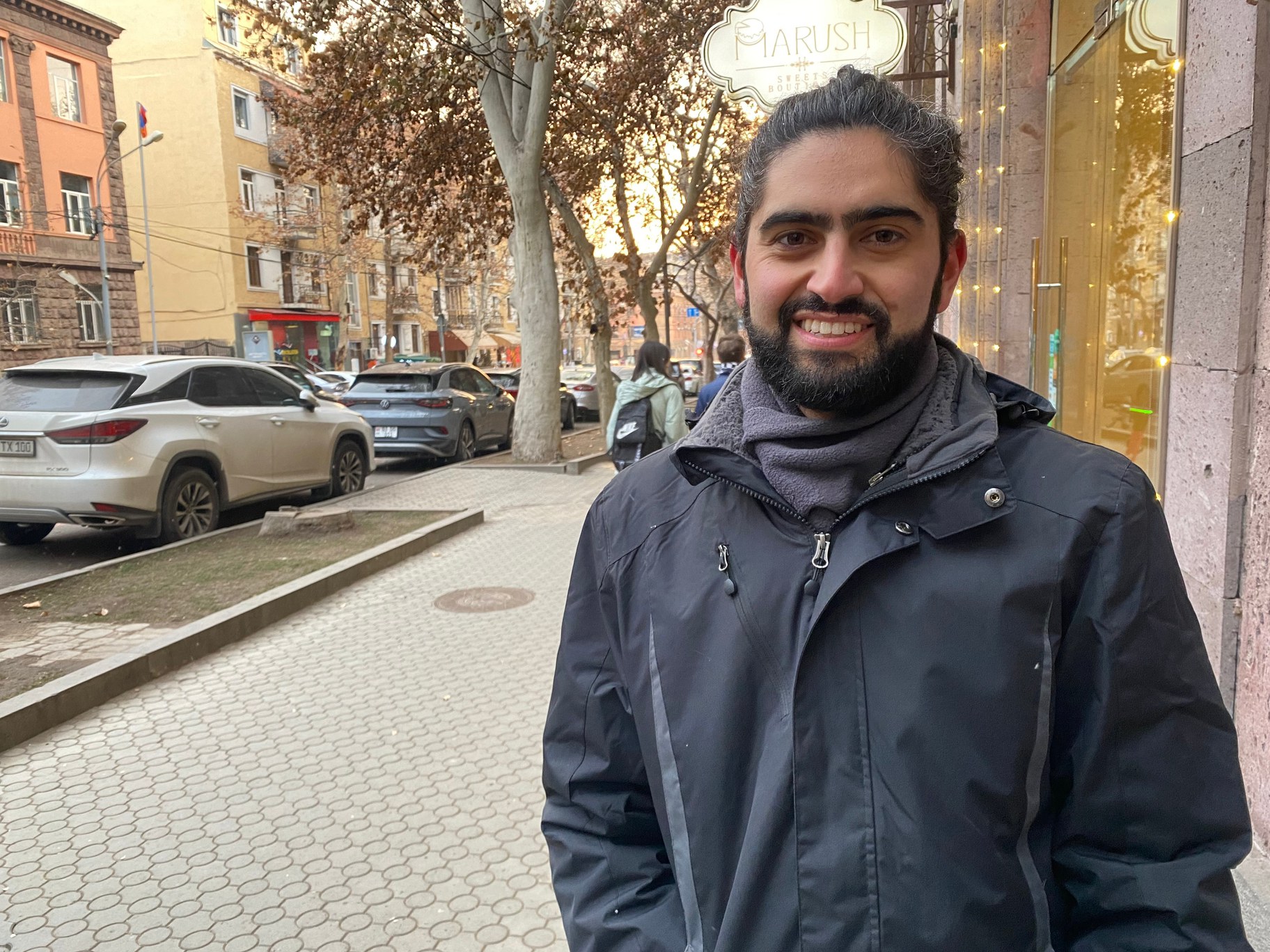
Mikael Matossian, 28, moved to Yerevan last year and rents an apartment from an Armenian man who moved to LA. “I feel like we traded places,” Matossian says. Photo by Levi Bridges.
“My physical appearance comes off as very Californian,” says Mikael Matossian, a 28-year-old Angeleno who moved to Yerevan last year and now works for a renewable energy company. “You don’t see a lot of people here walking around with man-buns and beards.”
Even though he had only spent several months living in Armenia prior to moving here full-time, Matossian says Yerevan felt like a very familiar place. He grew up speaking the Armenian language and going to an Armenian school in LA.
But he still sometimes feels like an outsider, and not just because he has a man-bun. Like many Californian Armenians, Matossian grew up speaking Western Armenian, a dialect of the language spoken in a part of Armenia that was absorbed into Turkey as part of the genocide. Moving to Yerevan, he and other “re-pats” have had to adapt to speaking Eastern Armenian, which is spoken in the capital.
“Right off the bat, when I speak, Armenian people know that I’m not from here. I used to be kind of self-conscious about that because I wanted to fit in, but I’ve since kind of abandoned that idea,” Matossian says.
The OG repat
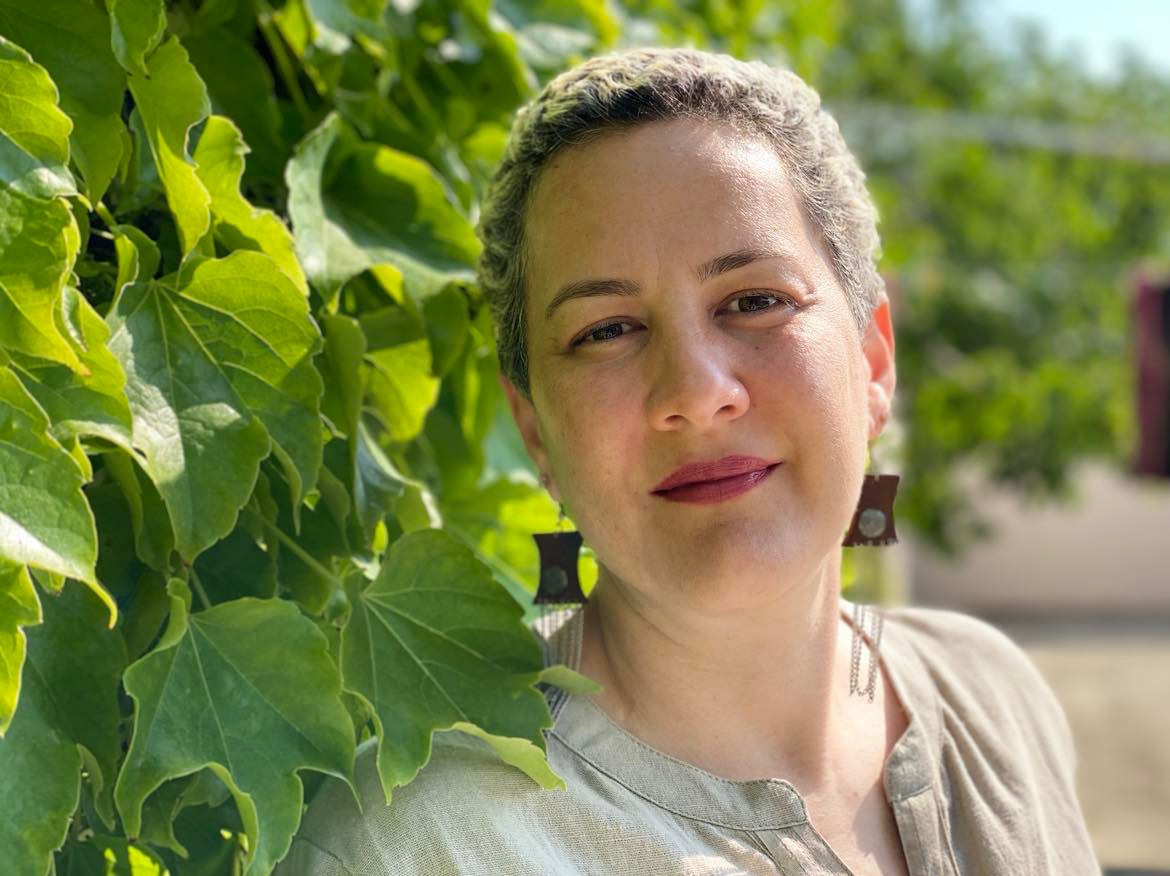
Madlene Minassian, originally of West Hollywood, relaxes at a friend’s summer house in Mrgashen, Armenia. Photo courtesy of Lilit Batikyan.
Madlene Minassian grew up in West Hollywood and moved to Yerevan 22 years ago, before it was trendy. She first came to Armenia as a teenager to work on a volunteer project in a rural village. That experience changed her path forever.
“We were sharing one outhouse with 20 volunteers and it was the happiest I had ever been,” Minassian says.
Compared to the U.S., life in Armenia felt more authentic to Minassian – everything in California seemed manicured in comparison.
She decided on that trip that she’d move to Armenia one day. At the time, Armenia was a relatively new country, and Minassian wanted to help build it into something better.
“From a very young age, we are taught about the genocide of the Armenian people, and we know that those who survived were few and that we have a responsibility to ensure that not only do we survive as a nation, but we thrive,” she says.
But moving to Armenia came with its challenges. She missed the diversity of LA living in Yerevan, where roughly 98% of people are Armenian.
“I ended up being a little bit a maverick in introducing new ways of dressing, new ways of interacting, and new ways to wear my hair,” she says.
The family
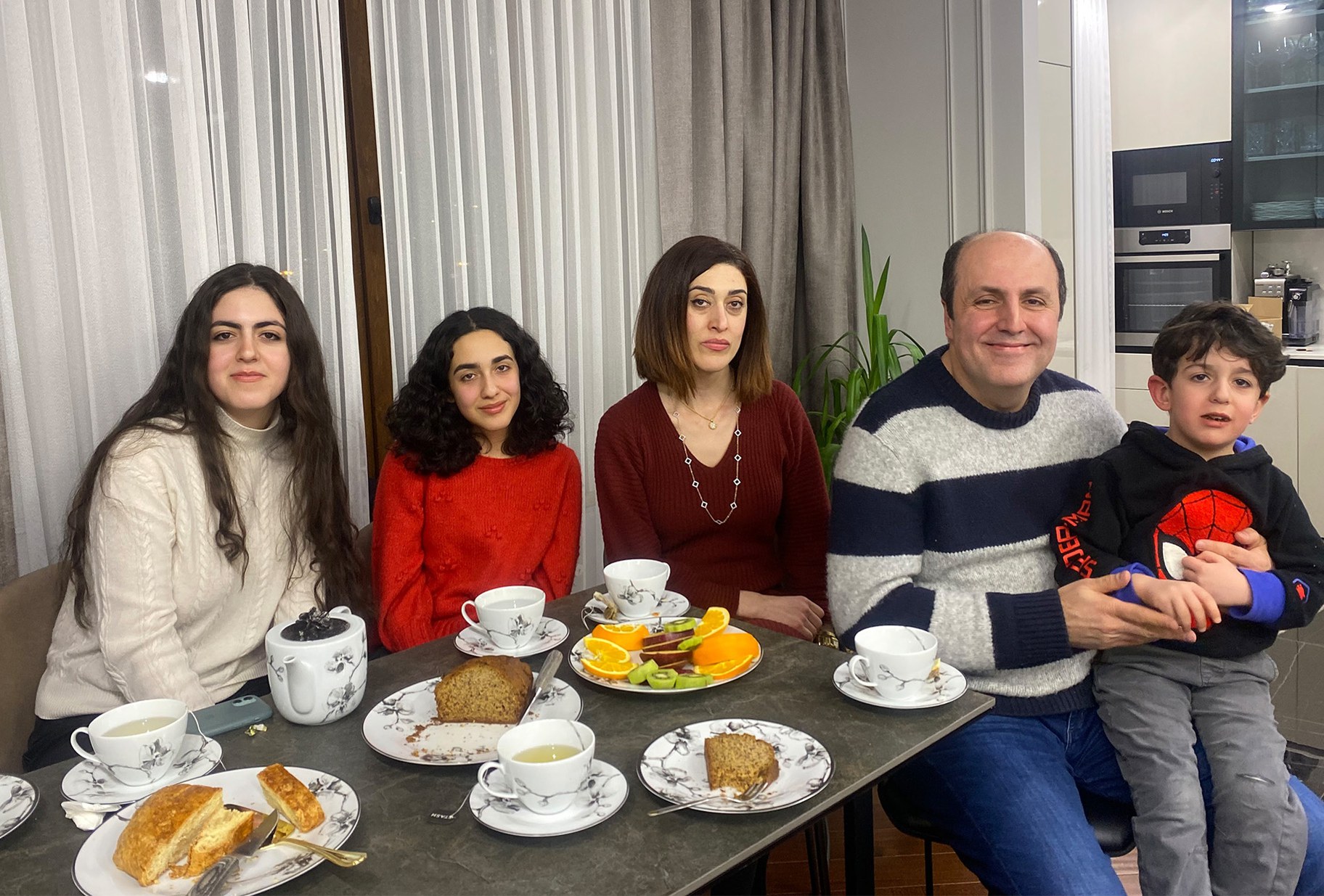
The Manucharyan family, who formerly lived in Glendale, moved to Yerevan, Armenia, two years ago. Photo by Levi Bridges.
Even as the pandemic raged and global travel remained largely shut down, Hovik Manucharyan, an Armenian who moved to Glendale when he was a teenager, got on a plane to Armenia in the fall of 2020 to help his home country.
At the time, Armenia and neighboring Azerbaijan were engaged in a brutal 44-day war. Entire towns fell to Azerbaijan and thousands of Armenians were displaced by the fighting. Manucharyan wanted to help out as a civilian and bring in needed supplies.
When he returned from the trip, he and his wife, Suzanna, decided to move their three kids and big poodle, Coco, to Armenia. They wanted to be closer to their people at an unstable time.
“It just sort of feels less stressful being here than far away and hearing about your homeland and not being able to contribute,” says Hovik Manucharyan, who has since started a podcast about the conflict to keep Armenians in faraway places like LA informed.
The family has moved around a lot. So their two daughters,15-year-old Nahzelie and 17-year-old Vardine, were used to starting over. But the experience was completely different in Armenia.
Vardine Manucharyan says that on the first day of school in Yerevan, the entire class crowded around her, offering to show her around. “In America, if you move schools, they're gonna be like, ‘Oh, is that girl new? Okay, whatever.’ But here, schools are more like family,” she says.
For some California families relocating to Armenia, security and a sense of community are an added benefit. Even though the ongoing conflict with Azerbaijan remains a threat, many say they feel much less vulnerable here than in American cities where violence has been rising in recent years.
“Here I feel very safe when [the kids] take a taxi because we know that, ‘Hey, this is Armenia, everyone cares about each other,’” Suzanna Manucharyan says.
The Hiker
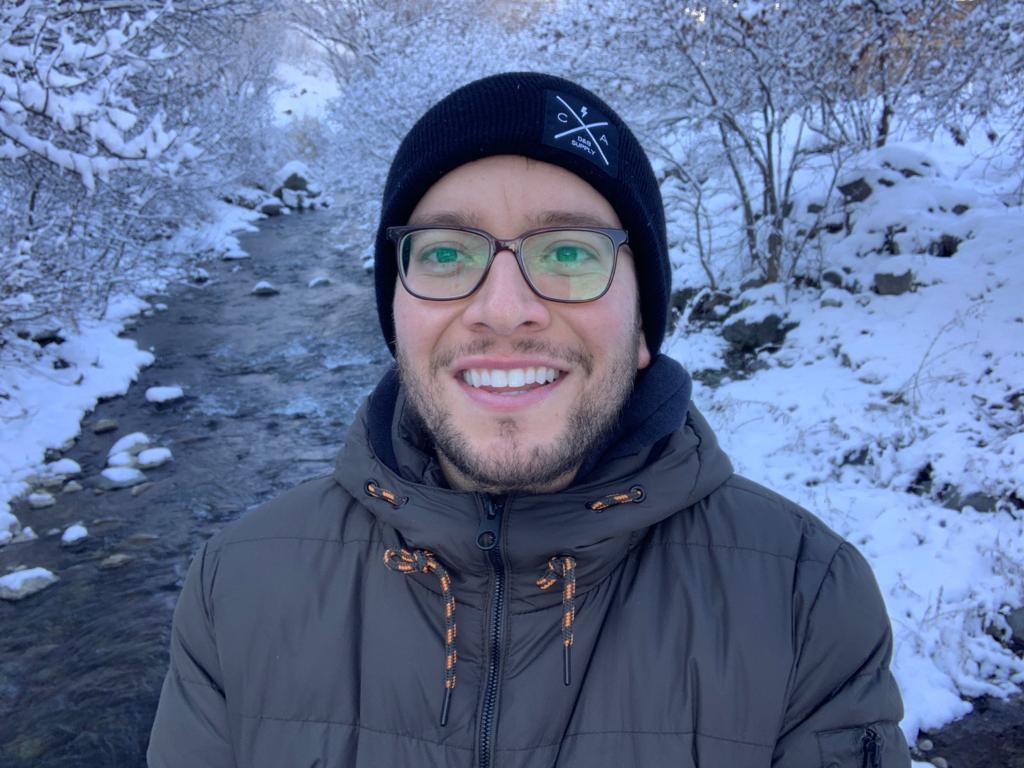
Kyle Khandikian hikes in Yeghegis, Armenia. Photo courtesy of Kyle Khandikian.
Kyle Khandikian felt drawn to this mountainous country after graduating from UCLA, but there was a time, not long before that, when he really wanted distance from Armenia.
Growing up, he went to an Armenian school in Encino, where students took classes about Armenian history and language. But the tight-knit Armenian community could feel restricting, in part because he’s gay – which he says was a closed, taboo subject among his peers at the time.
“I wanted out from my community because I really needed space to breathe and space to be myself,” Khandikian says.
“Maybe one of the reasons why I wanted to come here is to let go of some of the baggage that I was given just by way of being born into this place and this people.”
Khandikian doesn’t regret moving to Yerevan, but there are some things he misses about LA.
“There is Mexican food [in Yerevan] but it’s way too expensive, like I will not pay $10 for a single tamale,” Khandikian says.
The educator
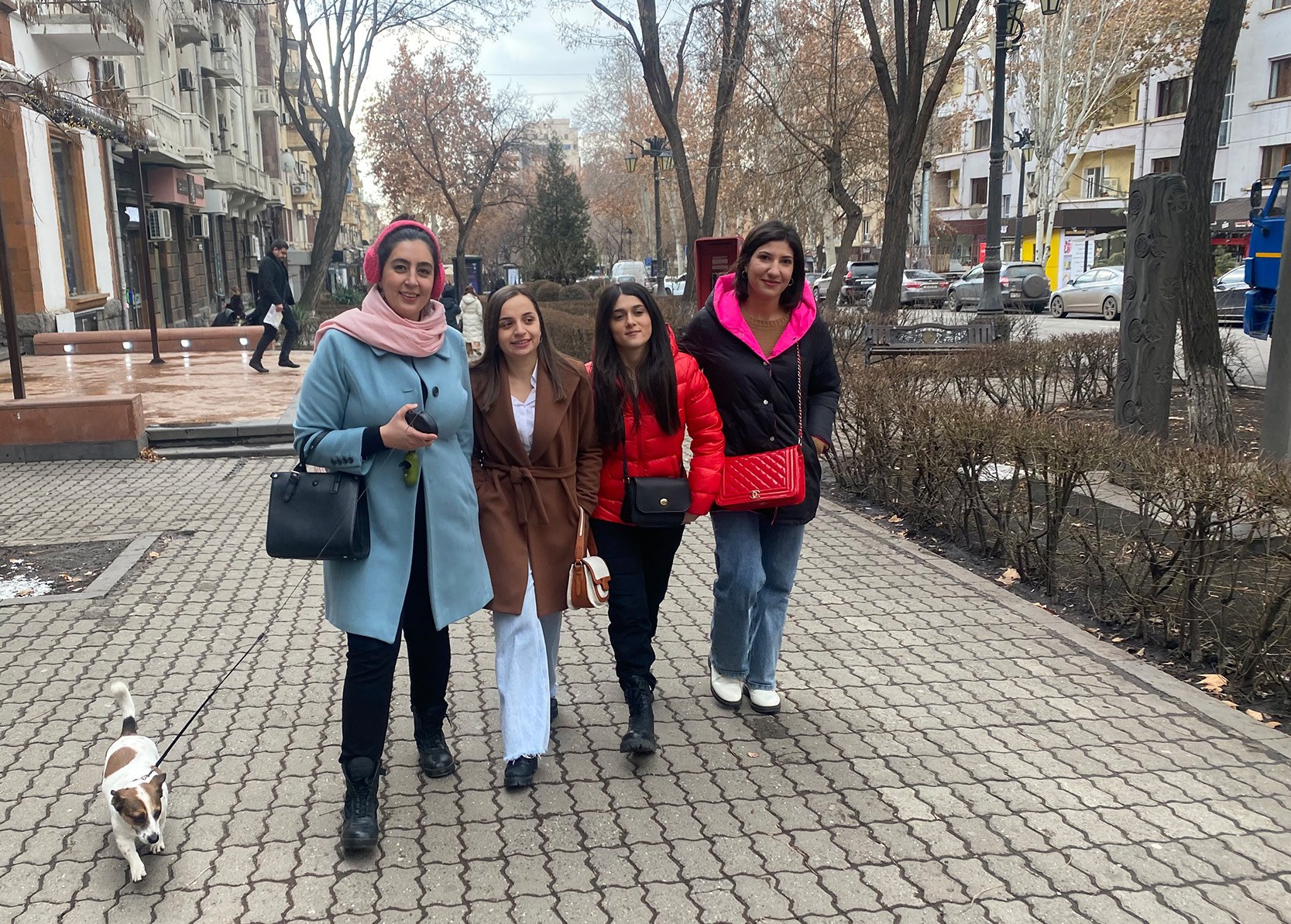
Nanor Balabanian, far left, walks through Yerevan with several young Armenian women she assisted to receive higher education. Photo by Levi Bridges.
Nanor Balabanian says she first fully felt like she had become part of an Armenian community when she moved from Palo Alto to Santa Barbara to attend UCSB. There she started meeting other Armenian students who came from Glendale.
“For the first time in America, I felt that I fit in,” Balabanian recalls.
As a college student, Balabanian helped launch a volunteer project one summer to bring internet access to a school in rural Armenia. After graduation, she expanded the initiative into a nonprofit, which today works to expand women’s access to education in villages across the country.
Balabanian says there’s still a mindset in some Armenian villages that women should marry at 18 and stay home while their husband works.
“It’s not like this everywhere, but there are still some villages where the idea is pretty strongly held, and that limits a lot of women’s opportunities to ever get an education,” Balabanian says.
On a recent afternoon, she accompanied two young women she’s known for 15 years to a store to help them buy supplies for a new beauty salon they plan to open. As the women picked through hair clips and opened boxes with blow dryers, Balabanian watched from a distance, letting them make the decisions.
“She's so excited to be this new woman,” Balabanian says of one of the girls who started university last year. “That girl feels she's important and I've done my job.”
The musician
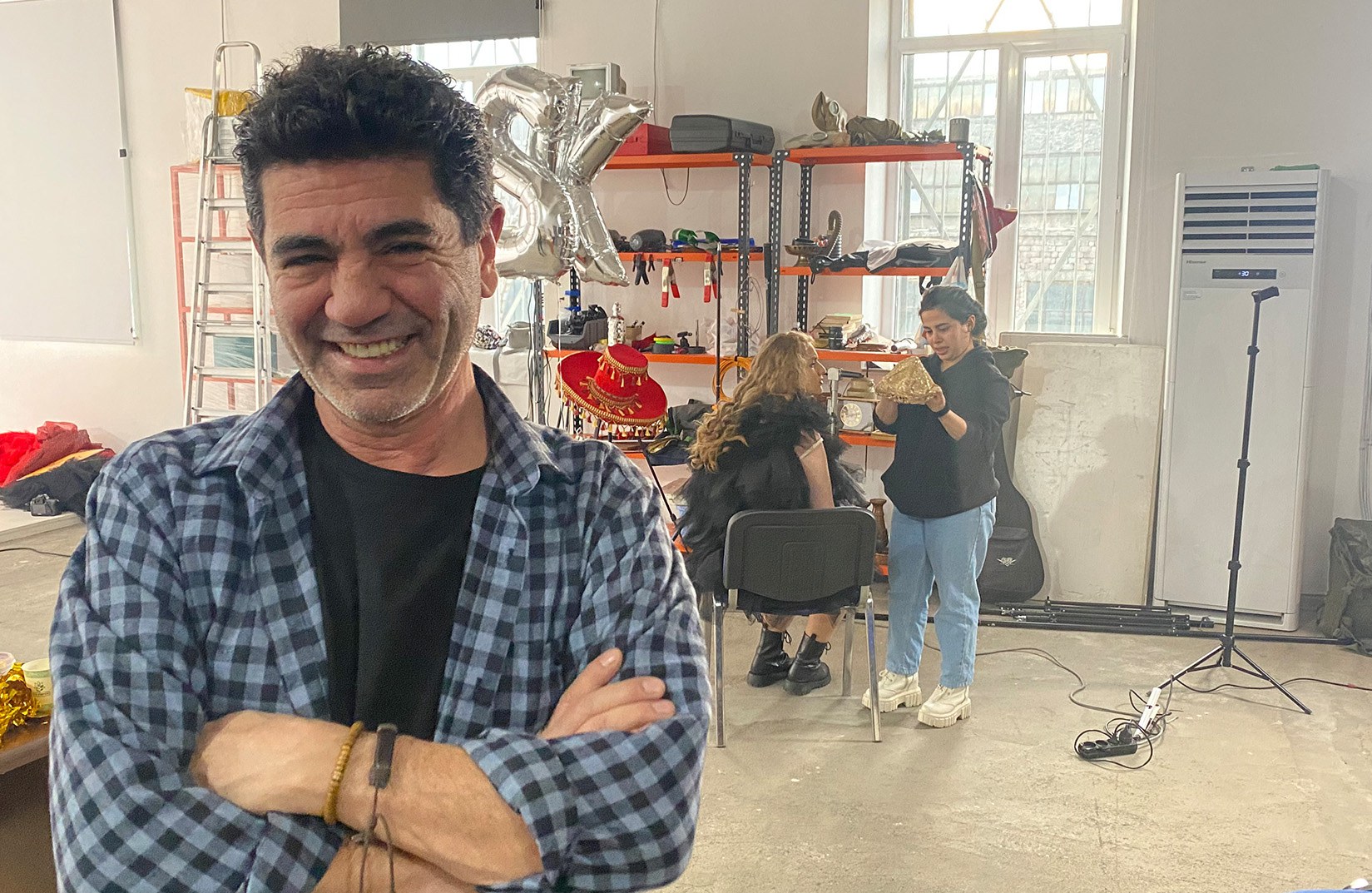
Arthur Aghadjanians stands on the set of a music video he helped produce recently in Yerevan, Armenia. Photo by Levi Bridges.
Arthur Aghadjanians of Glendale never planned to move to Armenia. He got stranded there when the world shut down in early 2020 because of the pandemic.
Aghadjanians spent that time in Yerevan holed up writing songs on the guitar and discovering local Armenian music. “I had no idea we have so much talent here,” he says.
Aghadjanians decided that he wants to connect the Armenian diaspora – which he says is linked closely through political issues and their common history – through something more fun – music.
So he now spends most of the year in Armenia, where he operates an online platform called Carpet Jam that curates videos of Armenian musicians. He has a packed schedule networking and helping musicians in Armenia produce music videos for the site.
Aghadjanians had never made a music video before he moved to Yerevan. He used to work in construction back in LA, but he always played music on the side.
“Just being around a place like Hollywood, you’ve seen how it’s done, so you come here and try to follow the same suit,” Aghadjanians says.

